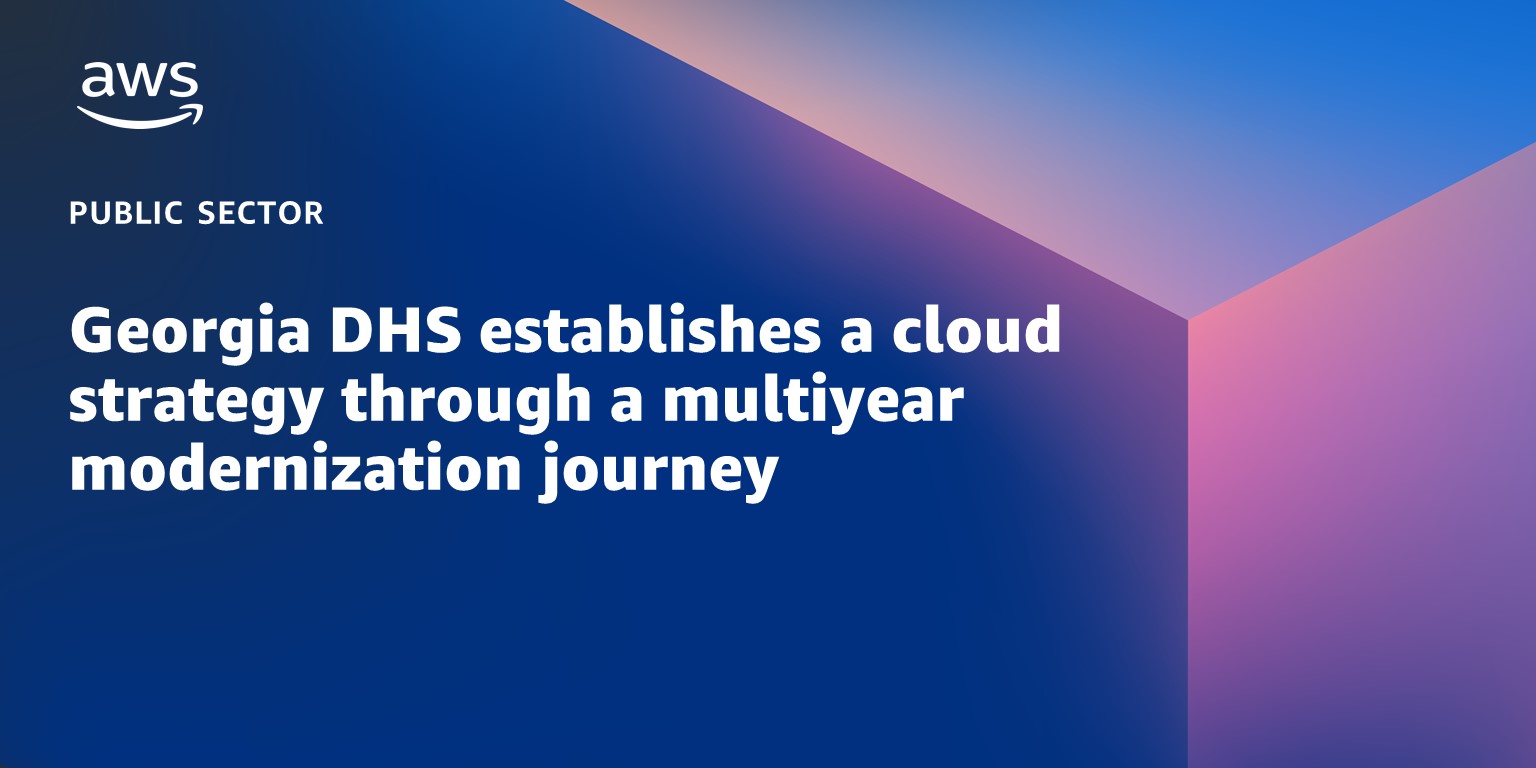AWS Public Sector Blog
Category: Enterprise Strategy
Developing a modern data-driven strategy in the public sector
Public sector organizations across the globe want to harness the power of data to make better decisions by putting data at the center of every decision-making process. Data-driven decisions lead to more effective responses to unexpected events. For government organizations, a more detailed understanding of citizen ambitions and requirements creates a better citizen experience.
What is a cloud center of excellence and why should your organization create one?
As more federal public sector organizations move toward cloud computing, many are looking for ways to make sure that they’re using the cloud effectively and efficiently. One way to do this is to establish a cloud center of excellence (CCoE). Learn how to build an effective CCoE to help streamline cloud adoption, security and innovation needs, reduce costs, and more.
Transforming your credit union’s processes by leveraging the cloud
To meet the needs of today’s credit union members, credit unions are investing in technologies that improve the member experience. Credit union leaders are thinking about how processes and practices can be made more efficient and effective. A major component of this technological shift involves migrating workloads to the cloud. Learn why credit unions can benefit from a cloud transformation journey, as well as resources that you can use to improve and accelerate the process of moving your vital workloads to the cloud.
Enabling success for AWS ISV Partners in the public sector
AWS independent software vendor (ISV) Partners support the public sector in accelerating the adoption of new services without the investment of developing and maintaining their own applications, accelerating digital transformation and improving citizen outcomes. The AWS Partner team’s goal is to help our partners grow profitable businesses while accelerating digital transformation. There are two clear ways we support ISV Partners to achieve this: helping partners reduce their costs by spending less, and helping them sell more.
Georgia DHS establishes a cloud strategy through a multiyear modernization journey
Georgia’s Department of Human Services (DHS), the largest of the state’s agencies, was able to digitally transform their business and rapidly scale their AWS Cloud adoption with AWS Managed Services (AMS). The department used AMS to modernize legacy technology onto a hosted platform that meets rigorous security guidelines and adds reliability to an environment where speed and availability are critical. At re:Invent 2022, Sreeji Vijayan, chief information officer of the Georgia DHS, spoke about the Georgia DHS’s migration journey with AWS. Learn key takeaways from Georgia DHS’s migration experience with AWS, and watch the on-demand session to dive deeper.
Higher education cloud financial planning: A former CFO’s perspective
Moving a college’s or university’s on-premises IT infrastructure to the cloud involves a lot of change in organization, culture, and practice. However, in my experience as a former chief financial officer (CFO) in higher education, financial planning for cloud computing is often not attended to with as much diligence. Financial planning needs to be understood as a positive feature of digital transformation, even if it means changing how financial plans are developed and managed. In this blog post, learn four strategies to consider when deciding to migrate to the cloud.
Investing in continuous learning to grow your organization’s future
Many organizations invest in infrastructure for future needs but may overlook needed technical training and cloud modernization skills for people within the organization. The AWS Cloud Adoption Framework (AWS CAF) provides guidance outlined in six different perspectives for an organization’s cloud transformation journey. One of these perspectives, People perspective: culture and change, addresses how to develop capabilities for the growth of people within an organization. Learn how developing key capabilities within the People perspective of the AWS CAF can support long-term mission success.
4 steps to build a data strategy for managing performance in the public sector
In the public sector, civic leaders must make sure that a wide variety of citizen services are delivered efficiently, responsibly, and successfully. To identify high performing operations and support those in need of improvement, decision-makers need real-time data in formats that are simple to interpret and understand. In my 25 years of experience serving the public sector, I’ve found that there are four foundational considerations for implementing a comprehensive public sector data analytics and performance management strategy.
Modernizing tax systems with AWS
Globally, tax agencies are increasingly looking to the cloud to address pressing needs, from aging and costly infrastructure, technology debt, poor disaster recovery (DR), and siloed data to challenges integrating with third party systems. In this blog post, learn how tax agencies and their tax solution providers can adopt a progressive approach to modernizing tax systems with AWS to enable more efficient and effective tax administration.
Helping governments and businesses pioneer sustainability initiatives: Top takeaways from the AWS Sustainability Conference
The AWS Sustainability Conference held in Dublin gathered public sector and commercial organisations to came together to better understand how the AWS Cloud can drive sustainability initiatives. The conference focused on the importance of sustainability in business strategy, and how organisations can leverage the power of technology to achieve their sustainability goals. Leaders at the AWS Sustainability Conference discussed key best practices to optimize for sustainability initiatives.









